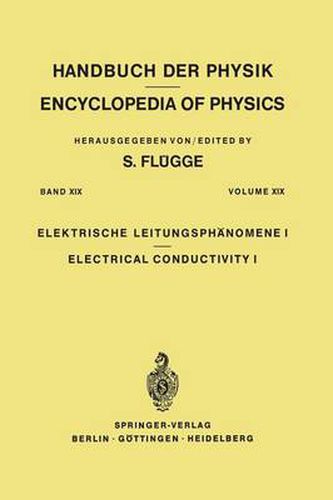Readings Newsletter
Become a Readings Member to make your shopping experience even easier.
Sign in or sign up for free!
You’re not far away from qualifying for FREE standard shipping within Australia
You’ve qualified for FREE standard shipping within Australia
The cart is loading…






This title is printed to order. This book may have been self-published. If so, we cannot guarantee the quality of the content. In the main most books will have gone through the editing process however some may not. We therefore suggest that you be aware of this before ordering this book. If in doubt check either the author or publisher’s details as we are unable to accept any returns unless they are faulty. Please contact us if you have any questions.
191 Apart from numerous difficulties arising from the high pressure technique as such, there is a natural limitation to the possibility of applying a hydrostatic pressure, since liquids under pressure will solidify above a certain pressure limit. 8 2 Up to pressures of 3 X 10 kg.jm. at room temperature, a liquid like isopentane can be used. For higher pressures helium gas may be used, perhaps to about 9 2 10 kg.jm. , but BRIDGMAN already encountered enormous leakage difficulties 7 when using this gas at 7.10 kg.jm.2 at 90 Degrees K. A solution has been found by applying mechanical pressure for the range 8 9 2 between 3 X 10 and 10 kg.jm. , by using silver chloride as transmittant. In this case, however, one has to apply unknown corrections for shearing stress and deformation of the sample, a problem which BRIDGMAN solved experimentally by a determination of the resistivity in the pressure region between 2 and 8 2 5 X 10 kg.jm. , by the hydrostatic and by the mechanical pressure method as well, and applying the correction factor thus determined to the results obtained at higher pressures. Though this method seems to be right in good approximation, the data for the highest pressures are to be considered as less accurate.
$9.00 standard shipping within Australia
FREE standard shipping within Australia for orders over $100.00
Express & International shipping calculated at checkout
This title is printed to order. This book may have been self-published. If so, we cannot guarantee the quality of the content. In the main most books will have gone through the editing process however some may not. We therefore suggest that you be aware of this before ordering this book. If in doubt check either the author or publisher’s details as we are unable to accept any returns unless they are faulty. Please contact us if you have any questions.
191 Apart from numerous difficulties arising from the high pressure technique as such, there is a natural limitation to the possibility of applying a hydrostatic pressure, since liquids under pressure will solidify above a certain pressure limit. 8 2 Up to pressures of 3 X 10 kg.jm. at room temperature, a liquid like isopentane can be used. For higher pressures helium gas may be used, perhaps to about 9 2 10 kg.jm. , but BRIDGMAN already encountered enormous leakage difficulties 7 when using this gas at 7.10 kg.jm.2 at 90 Degrees K. A solution has been found by applying mechanical pressure for the range 8 9 2 between 3 X 10 and 10 kg.jm. , by using silver chloride as transmittant. In this case, however, one has to apply unknown corrections for shearing stress and deformation of the sample, a problem which BRIDGMAN solved experimentally by a determination of the resistivity in the pressure region between 2 and 8 2 5 X 10 kg.jm. , by the hydrostatic and by the mechanical pressure method as well, and applying the correction factor thus determined to the results obtained at higher pressures. Though this method seems to be right in good approximation, the data for the highest pressures are to be considered as less accurate.